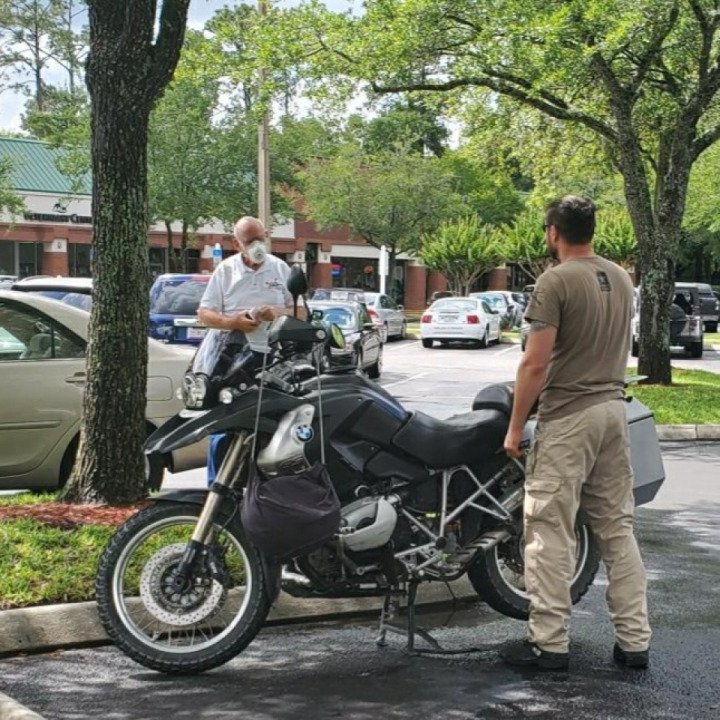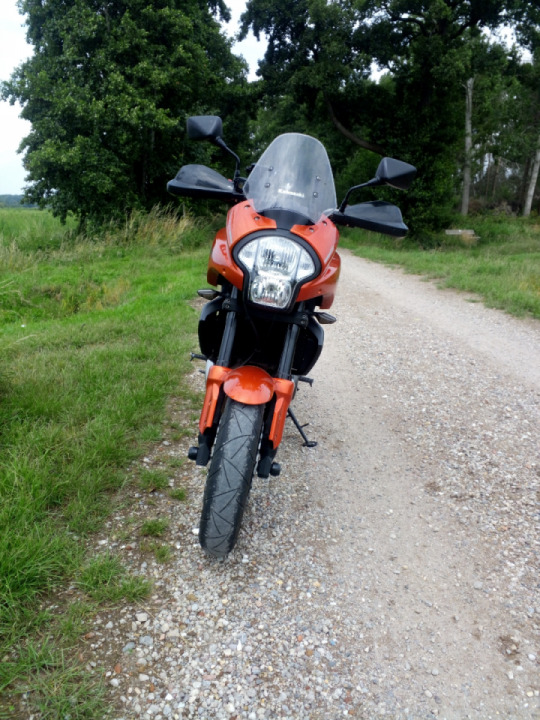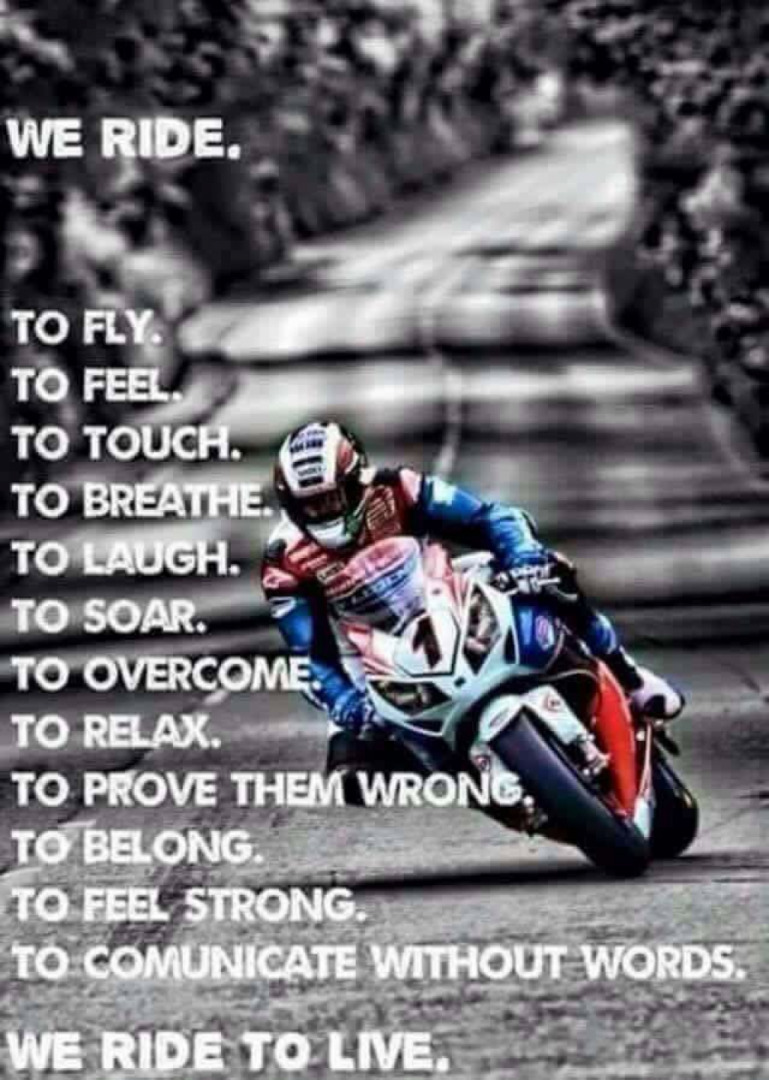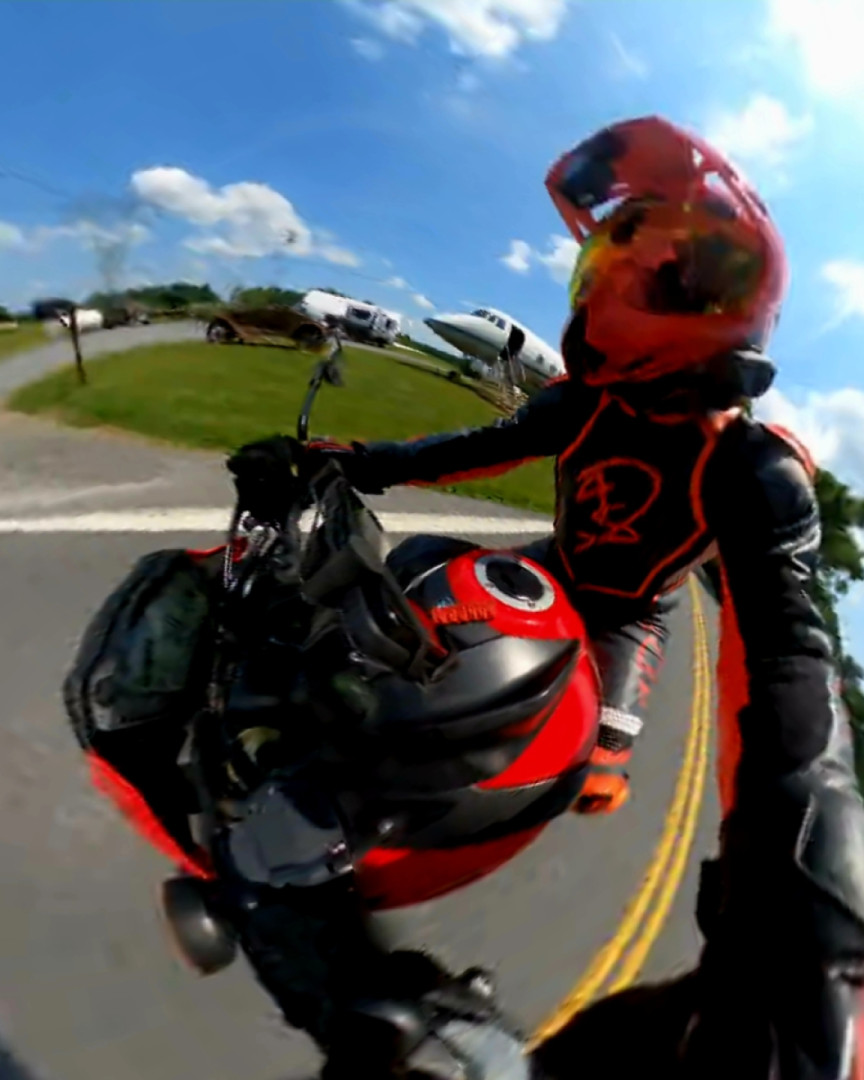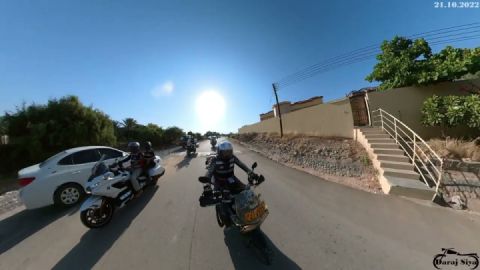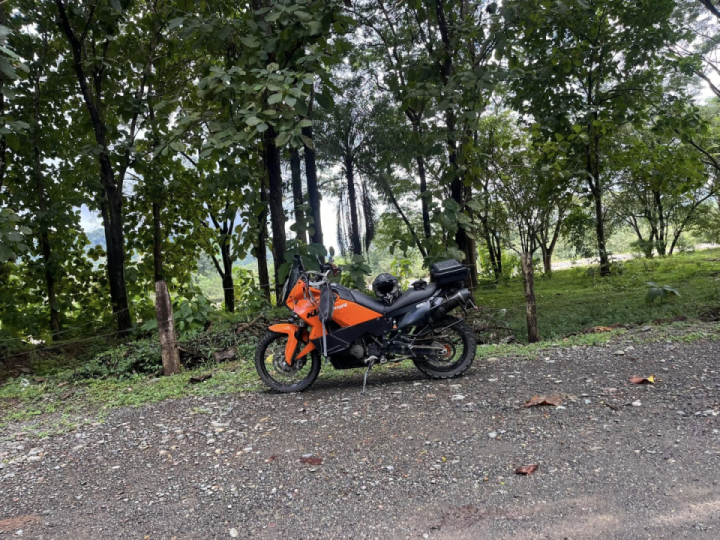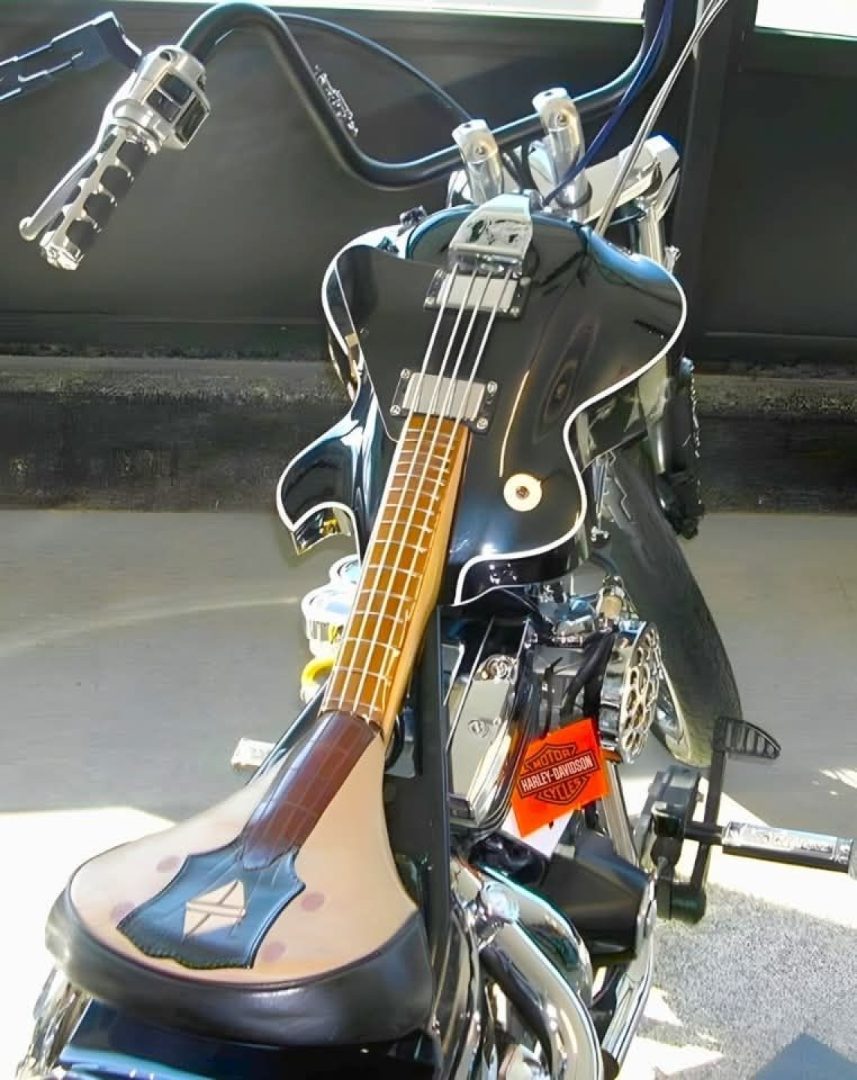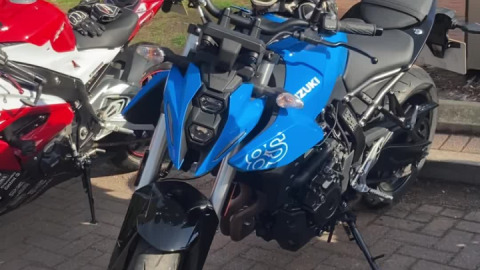My ride on Energica’s electric Italian superbike.
There’s a show on the Velocity channel called “What’s In The Barn” that, minus the standard reality TV manufactured conflict, is well worth watching. It’s about the Wheels Through Time Museum in Maggie Valley, North Carolina and their ongoing efforts to acquire and restore motorcycles from the very early 20th Century. The bikes are highly interesting because aside from Indians and Harleys, most of the marques are highly obscure and long extinct. Each had different approaches to design: drive systems, engine configuration, suspension, and aesthetics widely varied across these small manufacturers. They were true pioneers, making it up as they went along, taking their best guesses on engineering. They were writing the rulebook, not breaking it. As a nation, America wasn’t entirely ready for these machines. There were few paved roads, and gas stations wouldn’t be on every corner for decades. The people who bought these early motorcycles were pioneers too; they dealt with mechanical foibles that we’d never tolerate today. Just starting these older bikes was an arcane process, but their passion to ride, to do it differently, outweighed the inconveniences.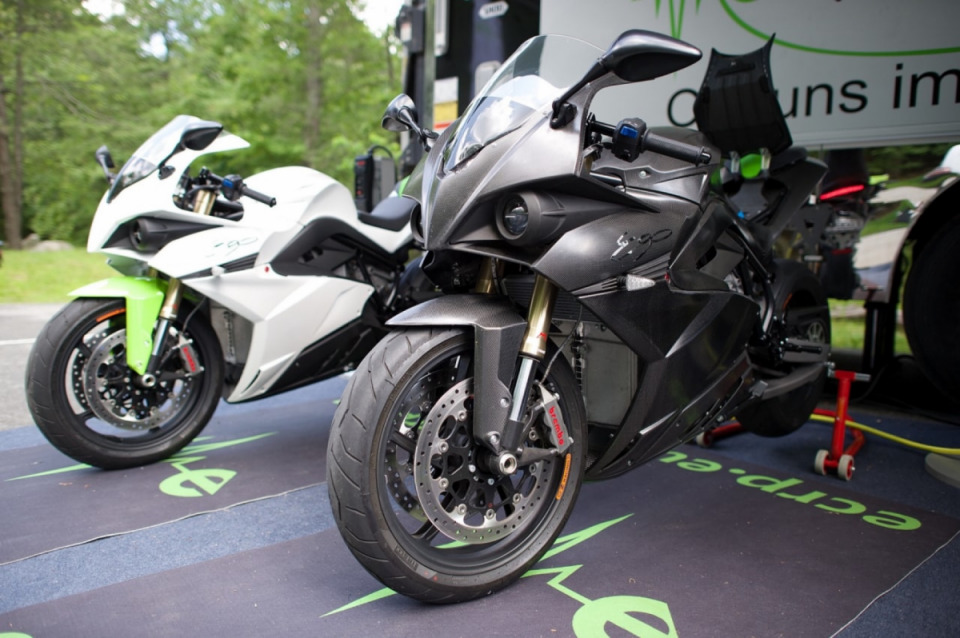
The fledgling electric motorcycle industry, and its potential customer base, are perhaps in a similar place in time. The companies producing the bikes all have varying backgrounds and design approaches, and are trying convince skeptical consumers of their appeal. Owning or even riding an electric bike offers challenges which some motorcyclists won’t accept: range, reliability, the lack of a charging station infrastructure and of course the purchase price among them. But buying a motorcycle is not a practical decision for most North American riders, it is a passionate one. For those who crave a new experience, electric motorcycles may fit the bill.
I was invited by Energica, a division within the Italian CRP Group, to test their Ego electronic superbike at Bear Mountain State Park in New York. CRP has been developing and supplying bleeding edge components to Formula One teams since 1970. They invented “Windform”, a composite 3D printing material which enables freeform design and rapid prototyping. In 2005, to further showcase their technology, CRP entered a bike with Fantic Motor in the 250cc World Championship, and then moved to racing in the 125cc Italian and European Championships. Because of CRP’s reputation as a forward thinking company, they were approached in 2010 by the organizers of the Isle Of Man TTXGP who were seeking CRP’s involvement in the evolving electric motorcycle World Championship. After sourcing a race winning electric motor, CRP used rapid prototyping to develop a complete racing motorcycle in just four months, an iteration of which ultimately won the TTXGP European Championship. This success led CRP to produce a street motorcycle, the Ego, available Spring 2015 in two guises, the standard model and the Ego 45, an ultra-limited edition of the bike with full Ohlins suspension, Oz wheels and carbon fiber fairings. The Ego 45 also features sprinklings of 3D printed and Windform materials, hallmarks of CRP’s technical prowess. I rode the standard model of the Ego, without all the trick parts, but it still looked and felt highly exotic.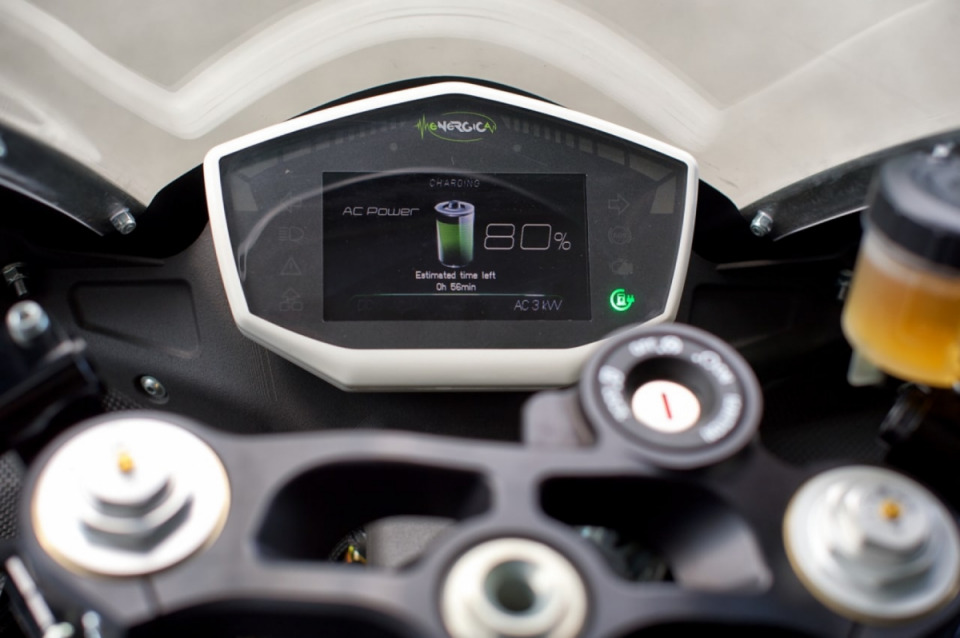
The line of beautiful Egos parked in a row, thick power cables plugged in under the seats for recharging was an impressive sight. The dash is a gorgeous high resolution TFT display which acts as an interface control for many features of the bike, and looks very next-generation. The bodywork is aggressively sculpted, futuristic yet somehow organic. The Ego looked suitably Italian, and inviting, but I was a bit skeptical. I came to this experience having ridden dozens of carburated and fuel injected motorcycles over the past 25 years, but I’d not yet ridden an electric motorcycle. In that fraction of a second before the “unknown became known”, expectations assaulted my thoughts. How “connected” would I feel to the throttle, while feeding in the power? Would the low rpm power delivery be smooth, or stumble “off-idle”, despite having no idle? Would the bike be “cammy” (doesn’t have a cam), or would the power delivery be linear? And most importantly, would it have that “soul” we all look for in our ideal power plant?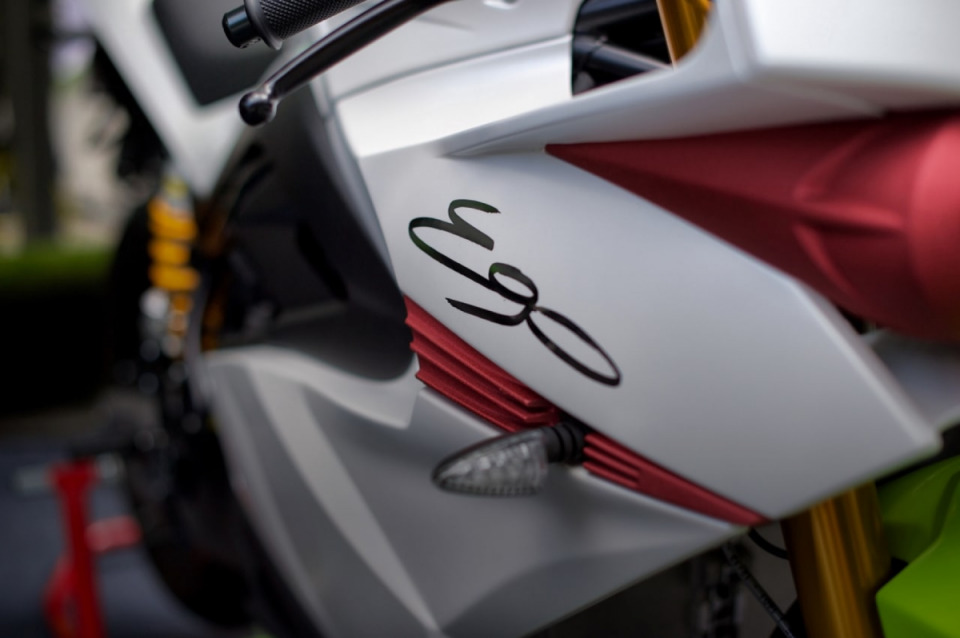
Long distance touring on electric bikes is not an option, unless you have a REALLY long extension cord
To start the Ego, you move the key to the “on” position like on any other bike, disengage the kill switch, hold the front brake (making sure the throttle is not cracked at all), press the “starter” — and a little green icon says “go” on the TFT dash. There’s no clutch, no first gear to kick down into, in fact there are no gears. So you’re sitting on a silent motorcycle, no starter or ignition noise, no idle or exhaust note, you haven’t put it into first and yet it’s ready to go. The lack of any of the ingrained procedures a motorcyclist expects is disorienting at first, but when you think about it, it’s a much simpler process and feels like a bit like….progress. Cracking open the Ego’s throttle was a surprise, the “off-idle fueling”, despite there being no idle nor fueling, was excellent. It reminded me of the volume control (more on that in a bit) on a high end audio system, silky smooth and incredibly linear. Of course this was just leaving the parking lot, we weren’t out on the open road yet.
When we did get on the road, the Ego delivered both sound and fury. An addicting sci-fi gear whistle climbed in volume and tone as the speed climbed; take a good ole’ V-4 Honda’s gear drive sound, mix with Darth Vader’s T.I.E. Fighter, run it through Metallica’s P.A. system, and you’ll be in the ballpark. I loved the sound of the Ego’s revs climbing as much as I love a Ducati’s revs falling; big surprise. Another big surprise: this bike is truly quick. Twist the grip and there’s no delay, just that Vaderwhistle and instant go. Accelerating felt like casting a giant fishing rod, speed coming off the reel and going, going, going right from your hand. Anybody who talks smack about not getting the appeal of electric motors should ride a fast, good one like the Ego. The throttle response and power delivery was unique, very different to a combustion engine, and superb. Another positive was the hugely reduced noise pollution relative to a traditional motorcycle. I got all the thrills I expected while riding a bike, the speed and the sound, without pissing off the civilians having picnics in the State Park. Again, progress.
Selectable, regenerative engine braking provides a familiar, combustion engine-esque feeling of deceleration, and feeds energy back into the battery. Not having a gearbox was a bit odd. There are no downshifts as you come into a slow corner, just throw the Ego onto its side, roll on the throttle as you bring the bike upright; no upshifts, no steps or holes in the acceleration. It required less thought and movement than a traditional motorcycle, which at first felt a bit disconnected, but then once I got used to it, it felt more connected than a traditional bike. Again, it felt like progress. I could accelerate hard out of a corner without upsetting the chassis because there was no gear change — in MotoGP, seamless transmissions are now a necessity for winning. And here’s the Ego, with no seams, and no gears. It feels a bit like where things will go, eventually.
The Ego’s riding position follows the Italian sportsbike blueprint: feet way back behind you, ass up, weight on your wrists. One minute into riding it I thought “you need to lose some weight, lard boy,” as the tank pressed into my gut. The ergonomics require fast riding to make sense. I only rode it for about twenty minutes, and did not get to tweak the Ego’s suspension to my individual tastes. Perhaps if I had, I’d feel differently, but I’d have preferred more relaxed ergonomics and plusher suspension settings given the weight of the bike, which is nearly 600 pounds. The weight of the battery and associated electronics made the Ego feel dynamically more like a sports tourer than a racebike. On the more high speed, open segments of our short ride, the handling did come together. Sadly, my ride on the Ego ended just as it began to reveal its soul to me. I wanted more seat time. In fact, I told the Energica I’d like to be the first person to ride one of their bikes across America.
So who’s the customer for the Energica Ego Superbike? Someone well heeled, to be sure. The standard model Ego will be priced at around $34,000 when it debuts next spring, the Ego 45 will be an eye watering $68,000 (although this price is in line with other ultra limited edition bikes from Italian manufacturers like MV Agusta and Ducati). The Ego’s committed ergonomics will be as challenging to some riders as the price tag (a model with more relaxed ergos is apparently in development). I could see dotcom types buying this bike as a two-wheeled alternative to a Tesla. Compared to a traditional sports bike like a GSXR-750, it’s hard to rationalize the price gap and the burdens of ownership. You’re essentially buying a lab bike, albeit an extremely well finished one. What will the dealer network be like? What is the ultimate lifespan of the battery, and how much will it cost to replace? How will the Ego handle a two hour ride in pissing rain, or sub zero temperatures? The technology is evolving rapidly, and certainly Energica is capable of innovative engineering. But what the Ego, and really all electric motorcycles need, is more ham-fisted seat time from the likes of you and I. To be thrashed, loved violently, even broken, because that’s what real riders do to their motorcycles, and it will evolve the product.
The true customer for the Energica Ego has to be more than just affluent and sprightly; they’ll need to possess a pioneering spirit, like those who bought bikes in the early 1900’s. They should be not only tolerant, but eager for the unique challenges of owning a high performance electric motorcycle. Every mile they ride on the Ego will be forging a path towards a future that will likely look very different for motorcycling. In years hence, they’ll regale their grandchildren with tales of whistling down backroads on their electric bike, in the days when most people still used fossil fuels and poo-pooed the idea of anything else. Maybe those grandkids will thank them.
And for some riders, that alone will be worth the thirty four grand.
 Follow
3K
Follow
3K


